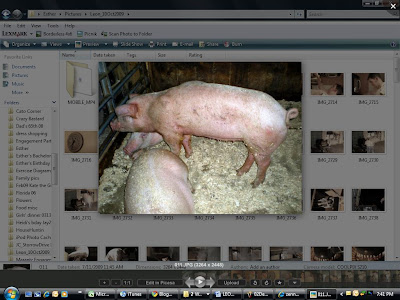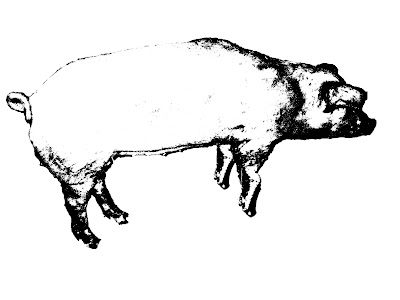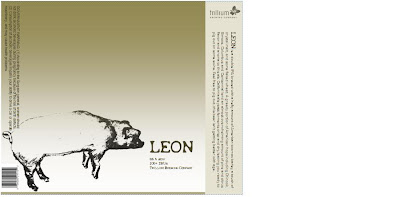As you can see from the
October 2009 water report, Boston city water is incredibly soft, meaning it is relatively low in dissolved minerals and ions. The softness is due to the fact that Boston city water is derived mainly from the ~39 square mile
Quabbin reservoir, a man-made body of water mainly fed by the Swift River. Where there are seasonal vagaries in the water profile, reading several reports tells me the water profile stays generally within a fairly tight (and very soft) range.
Without going in to any detail about the history behind the damming and relocating of 4 towns to create the reservoir, lets get down to its relative importance to brewing beer in my Brookline condo...as I mentioned, the take home message here: there's hardly any dissolved minerals.
For those unfamiliar with the ug/L vs. ppm units, simply divide the ug/L by 1000 to arrive at ppm.
For example, in the October report, there are 4190 ug/L of Calcium ions present.
That means ~4.2ppm Ca+.
The sulfate content is represented in mg/L, which are actually equivalent to ppm, so make sure you are paying attention to the units in your particular water report.
That's reading at 6.4 ppm SO4.
Historic and storied breweries achieved success and notoriety and defined their particular brewing styles around not only their ability to source quality ingredients, develop brewing techniques and engineering, but also largely based on their indigenous water supplies. For example, over history, Burton breweries featured beers with crisp, snappy dry and hoppy bitterness and near-rocky/minerally backbone. That's the short version of the story...the extended version includes additional practices that takes their too-hard water down a few notches.
We can take the two previously mentioned Boston city water ion concentration readings and compare it to the notably mineral laden (and brewing historically relevant) water from Burton on Trent in the UK.
That water rings in at 295ppm Ca+ and 725ppm SO4.
I won't go in to the
impact of mineral content in the mash or the flavor and mouthfeel in the finished beer, other than to say it is incredibly important and often overlooked. After reading a bit about water chemistry/mineral ion impact on beer, I find it a common theme for homebrewers to shrug their shoulders and say 'well, if your water is good to drink, then its good to brew with' This is mostly true for most water sources in the US, in that they are generally much more mineral ion rich than Boston's. There's also major concerns of OD'ing if you start blindly adding salts to your brewing liquor, possibly taking an otherwise perfectly good beer to a salty or harshly astringent mess.
Lets jump back to what this has to do with brewing my beer at home...essentially, I'm starting with a near blank water-slate. While its not quite distilled water (which is created by heating water in to a gaseous state, which leaves dissolved minerals behind, then condensing vapor back in to a liquid phase water free of any of those dissolved minerals), Boston water is just about as soft as any municipal water supply out there.
So, if I want to create a crisp and hoppy american pale ale or double IPA, I knew I'd have to get some of those minerals in to the water. Thankfully, the
brewing software I use has a water profile tool that helps me to accurately achieve just that.
You start by entering your current water supply, called 'Base Water' in to the system, and setting the target water profile. I used a recent Boston water report to set my Base Water values awhile back, and you'll notice they don't match up exactly with the October report. Doesn't matter much, as these seasonal differences aren't very large from an absolute sense, and since I'm not trying to engineer a perfect match to a target profile, I'm not too concerned about exact figures. Plus, the October report is already old news if I'm going to be brewing in November. This reality may be vastly different in your city, so please do a review of a relatively large sampling of water reports to see what your seasonal variances look like.
Anyway, Beersmith comes preloaded with several historic water profiles, including Burton on Trent. The software automatically calculates the impact of the addition of common brewing salts (ie. gypsum, calcium choride, sodium bicarbonate, etc.) on a specific volume of water, allowing you to quickly understand the impact of those additions. I gather from reading others' experiences that the BOT water actually tends to be almost excessively hard, so I stayed well below the target profiles during my first full-on brewing water tinkering when I brewed
Leon.
I actually just bottled Leon last night, and my initial impressions of the beer are downright amazing. It would be very informative to have a non-amended water beer with the same recipe to sample side by side, but I feel confident in my ability to perceive if the flavor and mouthfeel are where I would like it to be.
Full tasting notes + pictures around the holidays, when Leon should really be hitting his stride. That reminds me, I'll have to get cranking on pig-themed label too.






















































